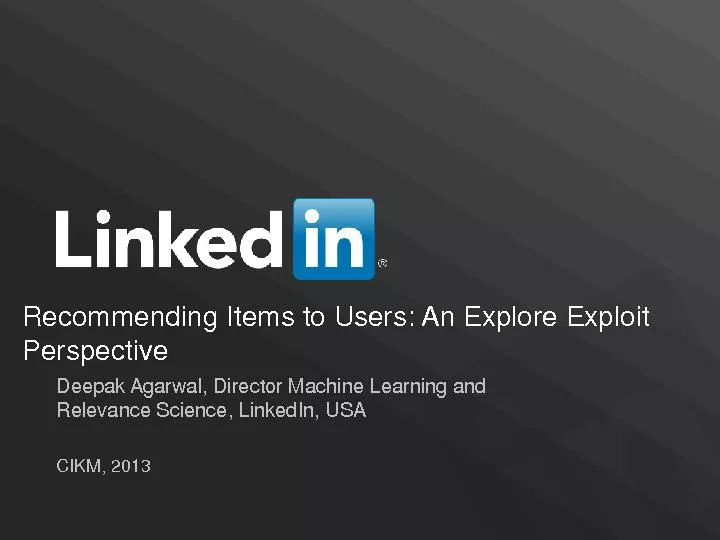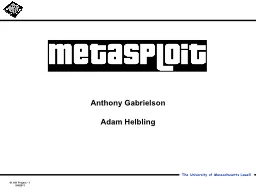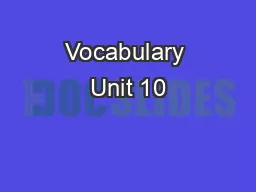PDF-Recommending Items to Users: An Explore Exploit
Author : kittie-lecroy | Published Date : 2016-07-19
Perspective Deepak Agarwal Director Machine Learning and Relevance Science LinkedIn USA CIKM 2013 Disclaimer xF0A7 O pinions expressed are mine and in no way represent
Presentation Embed Code
Download Presentation
Download Presentation The PPT/PDF document "Recommending Items to Users: An Explore ..." is the property of its rightful owner. Permission is granted to download and print the materials on this website for personal, non-commercial use only, and to display it on your personal computer provided you do not modify the materials and that you retain all copyright notices contained in the materials. By downloading content from our website, you accept the terms of this agreement.
Recommending Items to Users: An Explore Exploit: Transcript
Download Rules Of Document
"Recommending Items to Users: An Explore Exploit"The content belongs to its owner. You may download and print it for personal use, without modification, and keep all copyright notices. By downloading, you agree to these terms.
Related Documents














